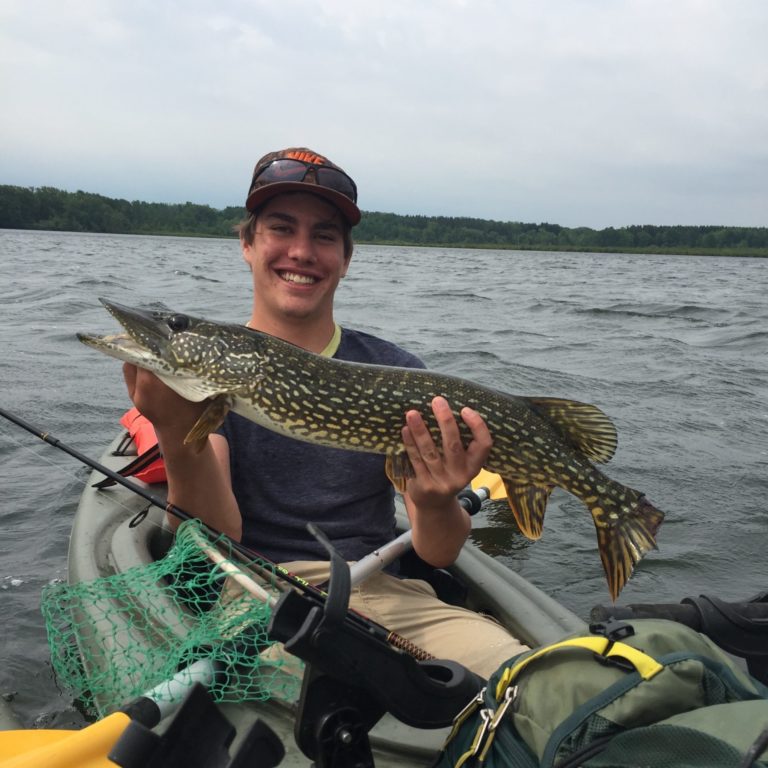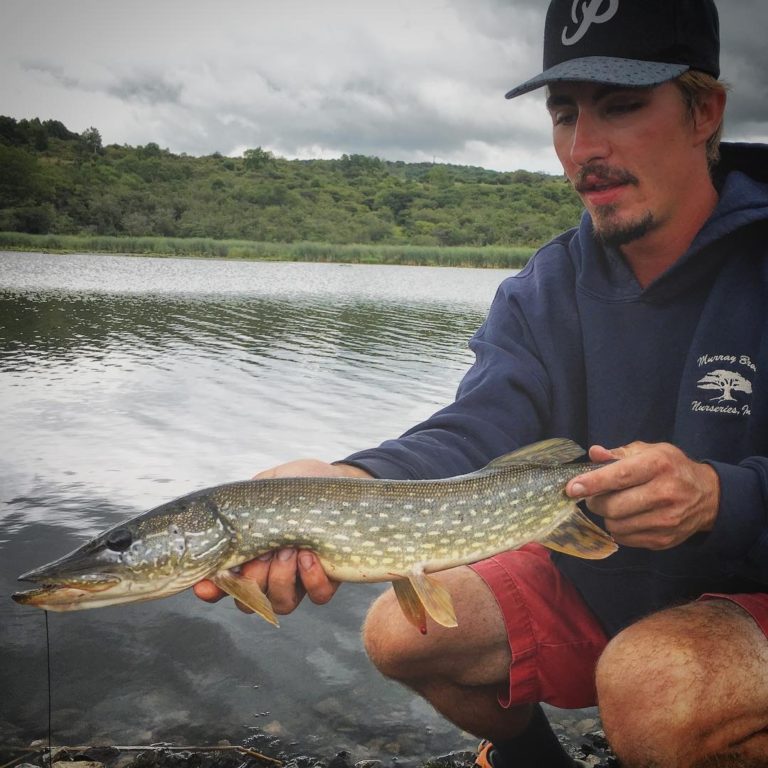The Northern Pike

The northern pike (Esox lucius) is a popular sport fish found in some areas of western New York. Northern pike typically range between 20 and 40 inches in length and can be identified by their toothy mouth, reddish-brown fins, and their gray or dull green body with numerous light spots. Northern pike are usually referred to as “northerns” or “pike.”
Northern pike resemble muskellunge in appearance, and it can be easy to misidentify one for the other. Although there are other more subtle differences, the easiest way to distinguish a pike from a muskellunge is coloration. Northern pike always have oblong spots that are lighter than the bulk color of their body. Great Lakes strain muskie can also have spots, however, the spots on a Great Lakes strain muskie are always darker than their bulk body color and are circular, not oblong. Also, northern pike will never have a barred pattern like a tiger muskie or an Ohio River strain muskie does.
Habitat
Northern pike typically roam big water and are therefore found in lakes, rivers, and large creeks. In order to support a predator like the northern pike, a lake or river needs a large forage base. In lakes, northern pike typically cruise the weed line, feeding on fish that venture too far out of the cover of the weeds. Smaller pike can frequently be found cruising weed beds in deeper water as well. Some large pike will also roam the open water.
Northern pike also inhabit large warm-water creeks and rivers, particularly in deep sluggish sections. It is rare but possible to find northern pike in the shallower areas of creeks such as flats or runs on occasion. Northern pike will often seek cover around submerged trees or in deep undercut banks in creeks and rivers.
Food
Northern pike are voracious and opportunistic predators. A northern pike’s diet will consist primarily of fish. Northern pike will usually eat anything among chubs, suckers, and sunfish. Northern pike can also eat other animals including frogs, small ducklings, and mice.
Where to Catch Northern Pike
Northern pike inhabit some lakes and warm-water creeks and rivers in western New York. On the Niagara Frontier, 18 Mile Creek (Ontario) and the Oak Orchard River can provide excellent fishing for northern pike. Although usually acknowledged for their outstanding cold-water fishery, the lower sections of 18 Mile Creek and the Oak Orchard River frequently produce nice sized pike that can be caught from shore or via kayak/canoe.
Some warm-water creeks in Chautauqua and Cattaraugus County can provide good fishing for pike including the Conewango Creek system. In Erie County, some Lake Erie tributaries provide the possibility of catching a northern pike. Creeks such as Ellicott and Tonawanda Creek, which is part of the Erie Canal, can produce pike on occasion. Rumor has it that Lake Kirsty at Tift Nature Preserve holds pike. However, from experience, this was found to not be the case and Lake Kirsty does not appear to be a good pike fishery.
The large lakes across western New York can provide the best opportunities for northern pike if fished at the right time. Bear and Cassadaga lakes hold northern pike, but the catch rates here aren’t great as these lakes also hold muskie. The best lake in the area for northern pike is Silver Lake. Silver Lake frequently produces nice pike both during the warm part of the year and through the ice. Silver, Cassadaga, and Bear lakes are best fished from a small boat or kayak. Below is a picture of a nice pike caught from Silver Lake from a kayak.
The best time to target northern pike is by far the spring, usually in May through June. During this time, most pike have finished spawning and begin to feed aggressively. Statewide northern pike season opens the first Saturday in May, but make sure you check local regulations at the body of water you’re fishing.

How to Catch Northern Pike
Northern pike can be taken both on live bait and on artificial lures. Good live bait includes large chubs or 6-8 inch suckers fished under a float. When fishing lakes, targeting weed lines is probably the best strategy. When fishing creeks and rivers, drifting your bait through deep pools with structure is probably most productive.
Popular artificial lures for northern pike include large stick baits and large inline spinners. On lakes, target weed lines and open water close to weed beds. Stick baits can either be casted or trolled behind a small boat or kayak. Vary the speed of the lure to see what the fish are responding to. It is wise to have a series of stick baits that run at different depths. Sometimes pike will take stick baits that run 12 feet deep, while on other days they will take stick baits running close to the surface.
Stick baits and spinners also work well when fishing creeks or rivers. On creeks and rivers, target deep pools and areas with structure such as downed trees and undercut banks. Depending on the depth of the creek, try stick baits that run both shallow and deep to cover as much of the water column as possible.
